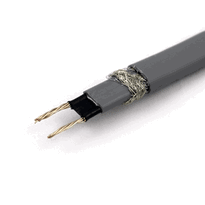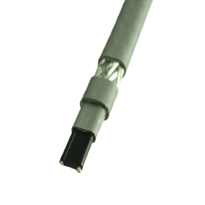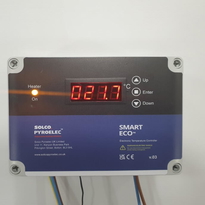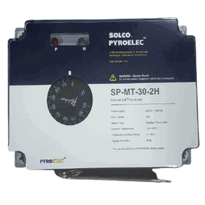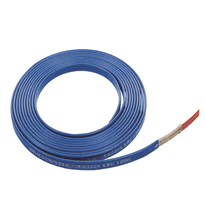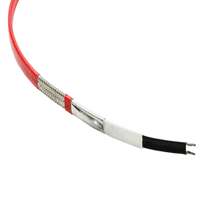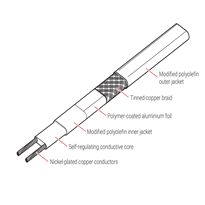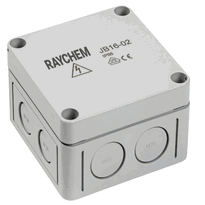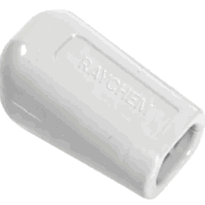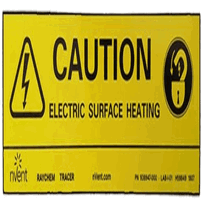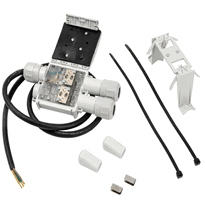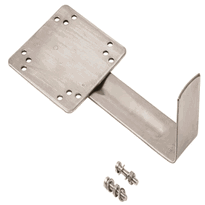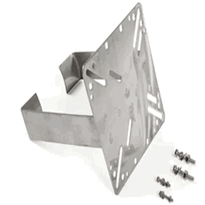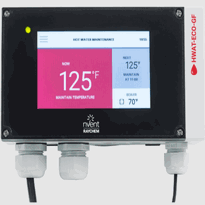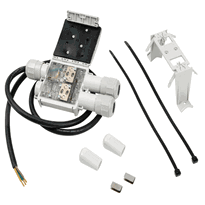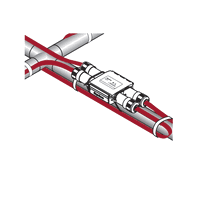Electric Water Pipe Wrap
Electric water pipe wraps are heating solutions designed to prevent pipe freezing and damage in cold environments by providing controlled, consistent heat along the length of the pipe. They usually incorporate thermostats, moisture-resistant materials, and various insulation options to optimize safety and energy efficiency.
Proper installation involves inspecting the pipes to ensure they are suitable for wrapping, securing the wrap firmly with appropriate electrical tape, and insulating the pipes to minimize heat loss. Regular maintenance and correct operation of the thermostat help ensure the system functions effectively throughout colder months.
Exploring these options offers comprehensive strategies to protect plumbing systems safely and effectively against the challenges posed by low temperatures in the UK.
Understanding the Purpose and Benefits of Electric Pipe Heating Wraps
Electric pipe heating wraps play a vital role in safeguarding water systems against the damaging effects of freezing temperatures. By delivering targeted, continuous warmth directly to the surface of pipes, these wraps effectively prevent the formation of ice within the pipes. Purpose and Benefits of Heating Cables This focused heat ensures that water flow remains smooth and uninterrupted during cold weather, significantly reducing the risk of pipe bursts and resultant water damage. Suitable for residential, commercial, and industrial settings where the threat of freezing is high, these wraps help maintain the integrity of plumbing systems and avoid costly repairs. Many models feature built-in thermostats that regulate operation, activating only when temperatures drop to critical levels, thereby promoting energy efficiency. Ease of use is another advantage, as these wraps are simple to install around a variety of pipe types. Additionally, their moisture resistance properties help prevent corrosion and electrical faults in damp conditions, further enhancing safety and longevity. They also contribute to safety by preventing freezing-related failures that could lead to hazards such as pipe bursts or water leaks.
Types and Features of Pipe Heating Products
A range of pipe heating products is available to suit various application requirements, each distinguished by their materials, temperature ratings, and design features.
Silicone rubber heat tapes offer resistance up to 230°C (450°F) and often feature built-in thermostats and grounding options. These properties make them adaptable for environments prone to chemical exposure and moisture, though they aren't suitable for immersion applications. Resistant to chemicals and moisture, making them ideal for harsh environments, but they lack waterproofing for submerged use.
Fiberglass-insulated heat tapes can withstand temperatures ranging from approximately 250°C to 480°C (482°F to 900°F). Their flexibility allows for application on both conductive and non-conductive surfaces, providing durability for high-temperature settings.
Samox high-temperature tapes are designed for extreme industrial environments, capable of enduring temperatures up to approximately 760°C (1400°F). These tapes have a woven fabric construction and tend to be priced higher due to their specialised materials and design.
Self-regulating tapes adjust their power output based on ambient temperature, helping optimize energy efficiency and prevent overheating. This dynamic response can reduce energy costs and improve safety during operation.
Constant wattage tapes provide a steady heat output irrespective of environmental conditions. While effective for uniform heating, they require careful monitoring to avoid potential overheating, especially in conditions of fluctuating ambient temperatures.
Proper Installation Techniques for Optimal Performance
Effective installation of pipe heating systems begins with meticulous preparation and thorough inspection to ensure optimal performance and safety.
Begin by inspecting pipes for any leaks prior to installation, as leaks can compromise insulation effectiveness and contact between the heat cable and pipe surface. Confirm that the outlet for the heat cable plug is protected by a Residual Current Device (RCD) or a Ground Fault Circuit Interrupter (GFCI) to prevent electrical hazards.
Clean pipe surfaces thoroughly, removing dirt, dust, and moisture to improve the adhesion of tapes and cables. Measure the entire length requiring protection, including underground sections below the frost line, and select a heat cable rated appropriately for the pipe material and local climate conditions, following the manufacturer’s instructions. Sustainable material sourcing ensures that the insulation and cable components align with eco-friendly standards and support a circular economy.
When laying the cable, start at the electrical outlet, run it parallel to straight sections of pipe, and spiral wrap around curves or irregular sections, maintaining consistent spacing. Secure the cable every 30 centimeters with electrical tape, ensuring a snug fit without damaging the cable.
Before proceeding with insulation and waterproof wrapping, verify that the cable is properly aligned and firmly attached. Proper attachment of the cable prevents movement that could cause damage or reduce efficiency over time.
Enhancing Efficiency With Insulation and Safety Measures
Implementing insulation and safety measures significantly improves the performance and longevity of pipe heating systems. Insulation reduces heat loss by up to 90%, helping to maintain higher water temperatures and decreasing the energy required to keep water heated. This leads to consistent water temperature and prevents energy waste. This results in lower utility bills and increased cost-effectiveness. Proper insulation also shortens hot water delivery times, conserving water and improving overall efficiency. Using specific insulation materials such as foam pipe lagging or high-temperature-resistant covers maximizes insulation effectiveness and durability.
In addition, insulation enhances safety by preventing burns from exposed hot pipes and protecting pipes against freezing in cold weather. Well-insulated pipes are less likely to burst in freezing temperatures, lowering the risk of pipe bursts and costly repairs. Regular inspections during installation help identify potential issues like corrosion and prevent water ingress, supporting proactive maintenance and early intervention.
Practical Applications and Situations for Use
Practical applications of electric water pipe wraps are widely diverse, as these systems are designed to address specific needs in both residential and industrial environments. In colder climates, they prevent pipe freezing by maintaining a consistent water flow in exterior water lines, particularly during sub-zero temperatures as low as -39°C. Purpose of Pipe Heat Tracing Systems This helps to reduce the risk of pipes bursting, which can cause extensive property damage and costly repairs. They are also utilized to protect internal pipes located along exterior walls or in unheated areas such as basements or garages, where temperature drops could lead to water damage and structural issues. Proper installation involves strict adherence to safety standards, often combining electrical heating elements with insulation to optimize performance and prevent overheating. When correctly applied, electric water pipe wraps provide an effective safeguard against cold-related pipe issues, helping homeowners and industry professionals maintain thermal continuity and safety throughout the colder months.
Conclusion
Proper selection, installation, and insulation of electric water pipe wraps are essential to provide reliable protection against freezing and to maintain water flow in cold weather conditions. Choosing appropriate types of wraps and adhering to correct installation techniques optimize their efficiency and safety. Gaining an understanding of practical applications ensures effective deployment across a variety of situations, whether in residential, commercial, or agricultural settings. Systematic implementation of these measures offers a durable, energy-efficient solution that reduces risks associated with pipe freezing and prolongs the lifespan of plumbing infrastructure. Ultimately, electric water pipe wraps are a vital and practical component in managing pipes during colder months within the UK.








